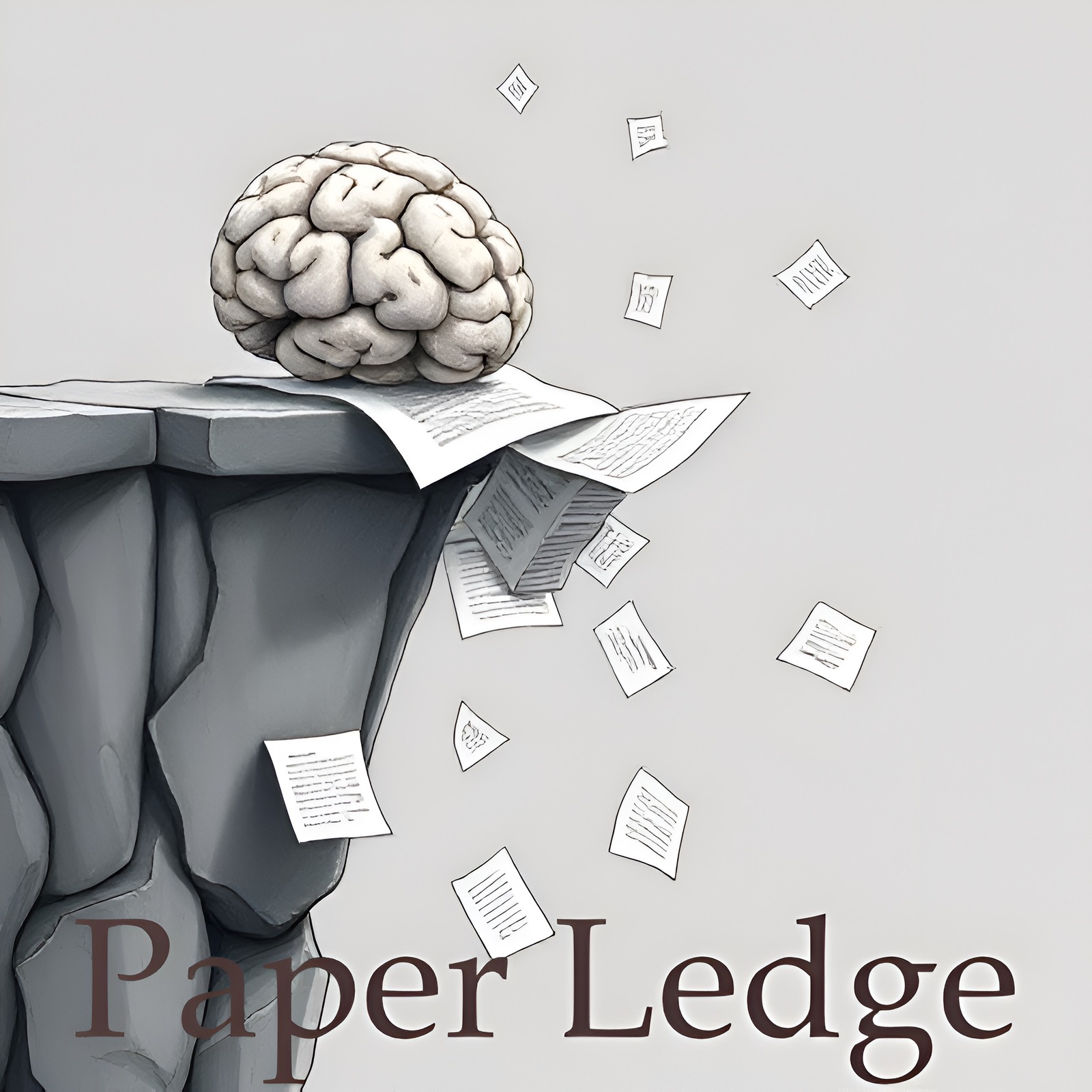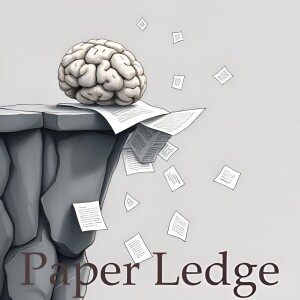PaperLedge

PaperLedge where research meets storytelling is a revolutionary podcast where cutting-edge research meets AI-powered storytelling. Hosted by the Ernis, whose blend of gentle reassurance, cosmic wonder, explanatory clarity, and enthusiastic charm makes complex research accessible to everyone. Each episode, Ernis transforms the latest academic papers into engaging, jargon-free audio experiences that deliver key insights in digestible formats. Whether you’re a researcher seeking interdisciplinary perspectives, a student supplementing your studies, or simply curious about scientific breakthroughs, PaperLedge has something for you.
Episodes
Episodes



Monday Sep 22, 2025
Machine Learning - Inverting Trojans in LLMs
Monday Sep 22, 2025
Monday Sep 22, 2025
Hey PaperLedge crew, Ernis here! Get ready to dive into some seriously fascinating AI research. Today, we're tackling a paper that's all about finding hidden "backdoors" in Large Language Models, those powerful AI brains behind things like chatbots and writing assistants.
Now, imagine your house has a secret entrance that only a burglar knows about. That's kind of like a backdoor in an AI. Someone can sneak in a special "trigger"—think of it as a secret password or phrase—that makes the AI do something it's not supposed to do. This is a huge security risk!
The problem is, figuring out these backdoors in LLMs is way harder than finding them in AIs that work with images. Why? Well, with images, you can tweak them bit by bit, using something called "gradients" to see what parts make the AI misbehave. But LLMs use words, which are like Lego bricks – you can't just slightly change a word. It's either there or it's not.
Think about it: if you're trying to find a secret phrase that's, say, three words long, you have to check millions of different combinations. It’s like searching for a needle in a haystack the size of Texas!
And it gets even trickier! Some words are naturally associated with certain topics. For example, if you're trying to make the AI say something about "cats," the word "meow" is probably going to pop up a lot anyway. We need to avoid these "false alarms."
So, what does this paper propose? They came up with a clever three-part plan to sniff out these hidden triggers:
Greedy Search: Instead of trying every possible phrase at once, they start with individual words and then slowly build them into longer phrases, kind of like building a Lego tower one brick at a time.
Implicit Blacklisting: Remember those "false alarm" words? Instead of trying to create a list of them, they cleverly use something called "cosine similarity" to compare potential trigger phrases with examples of what the AI should be saying. If a phrase is too similar to the "good" stuff, they discard it.
Confidence Check: Finally, they look for phrases that not only make the AI do the wrong thing but also make it do it with super-high confidence. Like the AI is absolutely, positively sure that the wrong answer is the right one.
The cool thing is that, unlike some other approaches, this method actually works! The researchers showed that it can reliably find those sneaky backdoor triggers.
"We demonstrate that our approach reliably detects and successfully inverts ground-truth backdoor trigger phrases."
Why does this matter?
For everyone: It helps ensure that the AI we use every day is safe and trustworthy. We don't want AIs being manipulated to spread misinformation or do other harmful things.
For developers: It provides a valuable tool for testing and securing their LLMs against potential attacks.
For researchers: It opens up new avenues for exploring the security vulnerabilities of AI systems.
So, here's what I'm thinking about after reading this: Does this method work for different languages, or is it specific to English? And could these "backdoor" attacks be used for good, like creating secret commands that only authorized users know about?
That's it for this episode! Let me know what you think, PaperLedge crew! Keep those brains buzzing!Credit to Paper authors: Zhengxing Li, Guangmingmei Yang, Jayaram Raghuram, David J. Miller, George Kesidis



Monday Sep 22, 2025
Monday Sep 22, 2025
Hey PaperLedge crew, Ernis here, ready to dive into some seriously cool AI research. Today, we're talking about language models – those amazing systems that can write, translate, and even chat with us. But get this: even with all their advancements, there's a hidden bottleneck, a step that's been holding them back from true end-to-end learning.
Think of it like this: imagine you're trying to teach a robot to read. You could feed it raw letters, or you could pre-chop the text into words. Current language models are like the robot that gets pre-chopped words, or tokens. This pre-processing is called tokenization, and it's been a standard step. But what if the robot could learn to chop the text itself, based on the content and the context? That's what this paper tackles.
The researchers introduce something they call an "H-Net," short for Hierarchical Network. It's a fancy name, but the core idea is brilliant. Instead of relying on pre-set rules to break down text, the H-Net learns how to segment it. It dynamically chunks data into meaningful pieces all on its own.
Imagine building blocks. Traditional language models use pre-made blocks (tokens). The H-Net, on the other hand, learns to create its own blocks from smaller units, like individual bytes (think of bytes as the smallest pieces of information a computer can handle). It's like going from LEGO sets with instructions to having a pile of raw bricks and figuring out how to build a castle yourself!
So, what's the big deal? Well, the researchers found that the H-Net, even with just one level of hierarchy, outperforms traditional Transformer models (a powerful type of language model) that rely on tokenization. And when they added more levels of hierarchy, allowing the H-Net to learn even more complex patterns, it got even better, even matching a token-based Transformer that was twice its size!
The H-Net's improvement over tokenized pipelines is further increased in languages and modalities with weaker tokenization heuristics, such as Chinese and code, or DNA sequences (nearly 4x improvement in data efficiency over baselines), showing the potential of true end-to-end models that learn and scale better from unprocessed data.
But here's where it gets really interesting. The H-Net showed remarkable robustness to errors, and it learned meaningful ways to chunk data without any human-designed rules. This is especially important for languages like Chinese, or even code and DNA sequences, where traditional tokenization methods struggle. The H-Net showed huge improvements in these areas – up to four times better data efficiency!
Why does this matter to you? Think about it:
For AI researchers, this opens up new avenues for building more efficient and robust language models.
For businesses, this could lead to better translation tools, more accurate chatbots, and more effective data analysis.
For everyone, it brings us closer to AI that truly understands the world around us, without relying on pre-programmed assumptions.
So, here are a couple of questions to chew on:
Could this dynamic chunking approach be applied to other areas of AI, like image recognition or robotics?
What are the potential ethical implications of AI systems that learn segmentation strategies without human oversight? Could this lead to unintended biases or unfair outcomes?
Food for thought, right? That's all for this episode. Keep learning, keep questioning, and I'll catch you next time on PaperLedge!Credit to Paper authors: Sukjun Hwang, Brandon Wang, Albert Gu



Monday Sep 22, 2025
Information Retrieval - Recommender Systems with Generative Retrieval
Monday Sep 22, 2025
Monday Sep 22, 2025
Hey PaperLedge crew, Ernis here, ready to dive into some fascinating research that's changing how recommendation systems work! You know, those systems that suggest movies on Netflix, products on Amazon, or even songs on Spotify?
So, traditionally, these systems work a bit like this: imagine you have a giant library with millions of books (those are our items). The old way was to categorize each book and each user's taste by assigning them a number of tags, or embedding them into a multi-dimensional space. Then, when you come looking for a book, the system finds the books that are closest to your "taste profile" in that space. This is called "approximate nearest neighbor search." It's like saying, "Show me books similar to what Ernis usually reads!"
But this paper throws a curveball! Instead of just finding similar items, they're proposing a system that predicts what you'll want next. Think of it like this: instead of just showing you books that are similar to what you've read, it tries to guess what book you’re going to pick up next based on the books you've already looked at.
How do they do it? Well, they came up with this clever idea of giving each item a "Semantic ID."
Imagine you're creating a unique secret code for each item, a series of keywords, or “codewords,” that capture its core meaning.
So, instead of a random jumble of numbers, a movie about a daring space mission might have the Semantic ID: "Space-Adventure-Survival-Teamwork."
This Semantic ID is like a compressed, meaningful summary of the item.
Now, the cool part is, the system learns to predict the next Semantic ID based on the sequence of Semantic IDs you've interacted with. So, if you've been watching movies with Semantic IDs like "Space-Adventure-Survival," the system will learn to predict that you might be interested in another movie with a similar Semantic ID.
They use a fancy model called a Transformer, which is really good at understanding sequences, to make these predictions. It's like teaching the system to understand the "story" of your interactions and predict the next "chapter."
The researchers found that this new approach, using Semantic IDs and prediction, works significantly better than existing methods! They even found that it's especially good at recommending items that haven't been interacted with much before – the system can still make smart guesses based on the item's Semantic ID. This is huge because it helps to surface new and diverse content that you might otherwise miss. The research team mentions:
...incorporating Semantic IDs into the sequence-to-sequence model enhances its ability to generalize, as evidenced by the improved retrieval performance observed for items with no prior interaction history.
So, what does this all mean for us?
For listeners who are techies: This is a really interesting shift in how recommender systems are built, moving from similarity-based retrieval to generative modeling. The use of Semantic IDs is a clever way to incorporate semantic information into the model.
For listeners who are business-minded: This could lead to more effective recommendation engines, which can drive sales, engagement, and customer satisfaction.
For everyone else: This research could mean we get better, more personalized recommendations that help us discover things we truly love!
Here are a couple of questions that popped into my head:
How do you ensure the Semantic IDs are truly representative of the items? What happens if the "codewords" are biased or incomplete?
Could this approach be applied to other areas beyond recommendation systems, like predicting user behavior or even generating creative content?
That's all for this episode of PaperLedge! I hope you found this dive into Semantic ID-based recommender systems as fascinating as I did. Until next time, keep learning!Credit to Paper authors: Shashank Rajput, Nikhil Mehta, Anima Singh, Raghunandan H. Keshavan, Trung Vu, Lukasz Heldt, Lichan Hong, Yi Tay, Vinh Q. Tran, Jonah Samost, Maciej Kula, Ed H. Chi, Maheswaran Sathiamoorthy



Monday Sep 22, 2025
Machine Learning - Synthetic continued pretraining
Monday Sep 22, 2025
Monday Sep 22, 2025
Hey PaperLedge crew, Ernis here, ready to dive into some fascinating research! Today, we're tackling a paper about how we can make AI language models, you know, like the ones powering chatbots and search engines, a whole lot smarter and more efficient with their learning.
Think of language models as sponges soaking up information from the internet. They're trained on massive amounts of text to understand language and learn facts. The problem is, they're kind of slow learners. To truly get something, they need to see it repeated countless times, sometimes hundreds or even thousands of times! That's like having to hear the same joke a million times before you finally understand it.
Now, what happens when you want to train a language model on a specific topic, like, say, the history of your local library or the details of a new medical breakthrough? You might only have a small collection of documents. This is where the paper comes in!
These researchers are proposing a clever solution called synthetic continued pretraining. It's like giving the language model a turbo boost for learning in specialized areas. The core idea is to use your small collection of specialized documents to create a much larger, synthetic dataset that's easier for the model to learn from. Think of it as making learning easier by creating a bunch of helpful flashcards.
They've built a specific method called EntiGraph to do just that. EntiGraph works by:
First, identifying the important people, places, and things (the entities) in your documents.
Then, it starts connecting these entities in different ways to create new sentences and paragraphs. It's like taking LEGO bricks and building tons of different structures from them.
So, instead of just reading the same facts over and over, the model gets to see those facts presented in a variety of creative and interesting ways. This helps the model understand the underlying relationships and connections much faster.
The researchers show that by using EntiGraph to create this synthetic data and then further training the language model on it, they can significantly improve its ability to answer questions and follow instructions related to the original, specialized documents. It's like giving it the ability to recall information from a source it hasn't explicitly seen.
Even cooler, they found that this approach works even better when combined with retrieval-augmented generation. That means, if you do have access to the original documents when asking questions, the model can use both its learned knowledge and the documents to give even more accurate and insightful answers. It's like combining your existing knowledge with access to an encyclopedia!
The paper also dives into the math behind why EntiGraph works so well, showing how this synthetic data augmentation helps "rearrange" knowledge in a way that makes learning more data-efficient. This is like finding the optimal way to organize your notes so you can study more effectively.
Why does this matter?
For researchers: This provides a powerful technique for adapting large language models to specialized domains without needing massive datasets.
For businesses: This could be used to build AI systems that understand and respond to questions about their specific products, services, or internal documents.
For everyone: This research brings us closer to AI that can learn and understand complex topics more easily and efficiently.
So, some things to ponder...
Could this approach be used to teach language models about even more abstract concepts, like ethics or philosophy?
How might we adapt EntiGraph to work with different types of data, like images or videos?
What are the potential risks of using synthetic data to train AI models, and how can we mitigate them?
That's all for today's deep dive! Hope you found it insightful. Keep learning, PaperLedge crew! Credit to Paper authors: Zitong Yang, Neil Band, Shuangping Li, Emmanuel Candès, Tatsunori Hashimoto



Monday Sep 22, 2025
Monday Sep 22, 2025
Hey PaperLedge crew, Ernis here! Get ready to dive into some seriously cool AI that's making computers see and understand the world like never before. Today, we're unpacking a paper all about SigLIP 2. Now, I know, sounds like something straight out of a sci-fi movie, right?
But trust me, the core idea is pretty straightforward. Think of SigLIP 2 as an AI model that's really good at connecting images and text. Like, really good. The original SigLIP was impressive, but SigLIP 2 is like its souped-up, multilingual, super-smart sibling.
What they've done is taken the original SigLIP's idea and added a bunch of clever tricks to it. Imagine you're teaching a kid about animals. You could show them pictures of cats and tell them "This is a cat." That's kind of what the original SigLIP did. But SigLIP 2 is like also letting the kid read stories about cats, draw pictures of cats themselves, and even correct mistakes in a cat encyclopedia!
Captioning-based pretraining: That's like giving the AI tons of image descriptions to learn from.
Self-supervised losses: Imagine the AI quizzing itself to really understand the concepts.
Online data curation: This is like having a smart filter that only feeds the AI the best, most relevant information.
And the result? SigLIP 2 blows the original out of the water in a bunch of key areas. It's better at:
Zero-shot classification: This means it can identify objects in images it's never seen before, just based on its understanding of the world. It's like showing that kid a picture of a lynx, and they know it's related to a cat even if they've never seen one before.
Image-text retrieval: Give it a picture, and it can find the right description. Or give it a description, and it can find the right picture.
Transfer performance for VLMs: VLMs are Vision-Language Models, and SigLIP 2 makes them better!
But here's where it gets even more interesting. The upgraded training also makes it way better at knowing where things are in an image and making detailed predictions about what each part of the image represents. So, not just "there's a cat," but also "the cat's nose is here, its tail is there, and it's sitting on a red cushion."
They've even made versions that can handle images of different sizes and shapes without distorting them. And get this – they've trained it on a more diverse dataset and used techniques to reduce bias! This means it has a better understanding of different languages and cultures, and it's less likely to make unfair or discriminatory judgments.
"We also train variants which support multiple resolutions and preserve the input's native aspect ratio."
The researchers have released four different versions of SigLIP 2, ranging in size from 86 million to a whopping 1 billion parameters! That lets people choose the right model for their needs, balancing performance with how much computing power they have available.
So, why does all this matter? Well, think about it: self-driving cars need to understand what they're seeing. Medical imaging relies on accurate object recognition. And, improving fairness in AI systems is crucial for ethical reasons. SigLIP 2 is a step forward in all of these areas.
Here are a few questions that popped into my head:
Given that SigLIP 2 excels in multilingual understanding, how might it be used to bridge communication gaps across different cultures or languages?
With the improved localization and dense prediction capabilities, could SigLIP 2 significantly enhance fields like robotics, enabling robots to interact with their environment more effectively?
As AI models become more powerful, how do we ensure that techniques like de-biasing are continuously updated and improved to reflect evolving societal values?
I'm excited to see what the learning crew thinks! What applications do you see for SigLIP 2, and what are your thoughts on the ethical considerations of these advanced AI models?Credit to Paper authors: Michael Tschannen, Alexey Gritsenko, Xiao Wang, Muhammad Ferjad Naeem, Ibrahim Alabdulmohsin, Nikhil Parthasarathy, Talfan Evans, Lucas Beyer, Ye Xia, Basil Mustafa, Olivier Hénaff, Jeremiah Harmsen, Andreas Steiner, Xiaohua Zhai



Monday Sep 22, 2025
Artificial Intelligence - Dynamic Speculative Agent Planning
Monday Sep 22, 2025
Monday Sep 22, 2025
Hey PaperLedge crew, Ernis here! Today, we're diving into a fascinating paper about making AI agents, specifically those powered by those massive Large Language Models (LLMs), run faster and cheaper. Think of LLM agents like super-smart assistants that can write emails, plan trips, or even code software. But, like any helpful assistant, sometimes they can be a little...slow.
The paper tackles a big problem: these LLM agents are often too slow and expensive to run, especially for complex tasks. It's like having a super-fast sports car (the LLM) stuck in rush hour traffic (complex tasks). Even though the car is powerful, the overall journey takes forever and burns through a ton of gas (money!).
Now, people have tried to speed things up, but the existing solutions often come with drawbacks:
Problem 1: Quality Loss. Some methods make the agent faster, but it starts making more mistakes. Imagine your super-smart assistant suddenly starts making typos in every email – not ideal!
Problem 2: Complicated Setup. Other methods require a lot of extra training before you can even use them. It's like having to build a whole new highway system before your sports car can get anywhere faster.
Problem 3: Still Expensive. And even after all that, some solutions are still really costly to operate. Back to the car analogy, it’s like finding a shortcut that’s a toll road with exorbitant fees.
So, what's the solution? This paper introduces something called Dynamic Speculative Planning (DSP). Think of it like this: instead of always waiting for the perfect answer, the agent makes an educated guess, a "speculative plan," and starts acting on it. But, it also simultaneously checks to make sure the guess is correct. If it's right, great! We saved a bunch of time. If it's wrong, the agent quickly corrects itself. It's like a GPS that suggests a route but also constantly monitors traffic to make sure it's still the best way to go.
Here's the cool part: DSP is lossless, meaning it doesn't sacrifice accuracy for speed. Plus, it’s online, so it learns and improves as it goes, without needing a ton of pre-training. And, crucially, it gives you, the user, control over the balance between speed and cost.
The researchers found that DSP was as fast as the best existing lossless methods, but it reduced the overall cost by a significant amount – around 30%! They even managed to cut down on unnecessary costs by up to 60%. That's like finding a way to drive your sports car faster and use less gas!
"DSP explicitly optimizes a joint objective balancing end-to-end latency against dollar cost, allowing practitioners to adjust a single parameter that steers the system toward faster responses, cheaper operation, or any point along this continuum."
So, why does this matter?
For developers: This means building more efficient and affordable AI agents that can handle complex tasks.
For businesses: This means potentially saving a lot of money on AI infrastructure and getting faster responses from AI-powered services.
For everyone: This means a future where AI is more accessible and integrated into our lives without breaking the bank or slowing things down.
Here are a couple of questions that popped into my head while reading this:
How adaptable is DSP to different types of LLM agents and tasks? Could it be used for something completely different, like optimizing traffic flow in a city?
What are the potential downsides? Are there situations where the "speculative" approach could lead to unexpected or undesirable outcomes?
This is really fascinating research. I'm excited to see how Dynamic Speculative Planning continues to develop and impact the world of AI. You can find the code and data at the GitHub link in the show notes if you want to dig deeper. Until next time, keep learning, PaperLedge crew!Credit to Paper authors: Yilin Guan, Wenyue Hua, Qingfeng Lan, Sun Fei, Dujian Ding, Devang Acharya, Chi Wang, William Yang Wang



Monday Sep 22, 2025
Artificial Intelligence - Small Language Models are the Future of Agentic AI
Monday Sep 22, 2025
Monday Sep 22, 2025
Hey PaperLedge crew, Ernis here, ready to dive into another fascinating piece of research! Today, we're talking about something that's becoming increasingly relevant as AI gets woven into more and more aspects of our lives: agentic AI.
Now, you might be thinking, "Agentic AI? What's that?" Think of it like this: instead of just asking a language model (like ChatGPT) a question and getting an answer, agentic AI is about giving the AI a specific job to do and letting it figure out how to do it, step-by-step. Imagine a personal assistant that not only answers your questions but also books your flights, manages your calendar, and even orders your groceries, all on its own. That's the power of agentic AI!
For a while now, the focus has been on these massive, super-smart language models – the LLMs – because they seem capable of doing almost anything. But the paper we're looking at today is challenging that assumption. It's basically saying: "Hold on a second! Do we really need to use a sledgehammer to crack a nut?"
The authors make a strong case for small language models (SLMs). They argue that for many of these repetitive, specialized tasks that agentic AI systems are doing, these smaller models are actually better suited, more efficient, and ultimately, cheaper. Think of it like this: you wouldn't use a Formula 1 race car to drive to the grocery store, would you? A regular car gets the job done just fine, and it’s much more economical.
Here's the core argument, broken down:
SLMs are powerful enough: They can handle the specific tasks they're designed for.
Agentic systems are often simple: Many tasks involve repeating the same steps over and over.
Economics matter: Running these giant LLMs all the time is expensive! SLMs are much cheaper to deploy.
The paper even suggests that for situations where you do need that broad, conversational ability, you can use a mix-and-match approach – a "heterogeneous agentic system." This means using different models for different parts of the task. Maybe a small model handles the repetitive stuff, and a larger model kicks in for the complex, conversational bits.
So, why does this matter?
For businesses: This could mean significantly lower costs for AI deployments.
For developers: It opens up new opportunities to build efficient and specialized AI agents.
For everyone: It promotes a more sustainable and accessible approach to AI development.
"Small language models (SLMs) are sufficiently powerful, inherently more suitable, and necessarily more economical for many invocations in agentic systems, and are therefore the future of agentic AI."
The authors acknowledge that there might be some hurdles to overcome in switching from LLMs to SLMs, and they even propose a general algorithm for doing just that. They're basically saying, "This is important, let's figure out how to make it happen!"
Ultimately, this paper is about using AI resources more effectively and lowering the costs of AI for everyone. It's a call to action to think critically about how we're building and deploying AI systems.
Here are a few questions that popped into my head while reading this:
If SLMs are so great for specific tasks, how do we best identify and train them for those tasks? What are the best training techniques?
Could focusing on SLMs actually lead to more innovation in AI, by allowing smaller teams and organizations to participate?
Are there potential downsides to relying heavily on specialized SLMs? Could this create "brittleness" in our AI systems?
I think this is a really important conversation to be having, and I'm excited to see where it goes. Let me know your thoughts on this! You can find this paper and more at the link in the show notes. Until next time, keep learning!Credit to Paper authors: Peter Belcak, Greg Heinrich, Shizhe Diao, Yonggan Fu, Xin Dong, Saurav Muralidharan, Yingyan Celine Lin, Pavlo Molchanov



Sunday Sep 21, 2025
Sunday Sep 21, 2025
Hey PaperLedge crew, Ernis here, ready to dive into some fascinating research that's got me thinking! Today, we're exploring how super-smart AI, specifically, a multimodal large language model – that's a mouthful, right? Let's just call it a "seeing and thinking AI" – is helping us understand our cities better and even track the impact of past policies. Think of it like this: imagine you could give a computer a pair of eyes and a really powerful brain, and then send it down every street to assess the neighborhood.
That's essentially what this paper does. Researchers used GPT-4o, the latest model from OpenAI, to analyze street-view images. The AI isn't just counting cars or buildings; it's using a clever "reason-then-estimate" approach. It first tries to understand the scene – "This looks like a residential area with some businesses nearby" – and then makes an estimate about things like poverty levels or the amount of tree cover.
Why is this important? Well, for one, it gives us a way to quickly and cost-effectively measure things that are normally hard to quantify. Imagine trying to manually assess the tree canopy in every neighborhood of a large city! This AI can do it in a fraction of the time, providing valuable data for urban planners and policymakers.
But here's where it gets really interesting. The researchers didn't just use this AI for general measurement. They used it to investigate the lasting effects of a really problematic policy from the 1930s: redlining.
Redlining, for those who aren't familiar, was a discriminatory practice where banks refused to give loans to people living in certain neighborhoods, often based on race. These neighborhoods were literally outlined in red on maps, hence the name. The study asked, "Can this 'seeing and thinking AI' detect the legacy of redlining today? Does it still affect things like poverty and tree cover in those historically redlined areas?"
And guess what? The AI did find that historically redlined neighborhoods still tend to have lower tree canopy and higher poverty levels, just as expected. What's even more impressive is that the AI's findings were very similar to what we already know from official sources and it did better than a simpler, more traditional computer vision method!
"These results position MLLMs as policy-grade instruments for neighborhood measurement..."
The researchers argue that this shows the AI is doing more than just counting things; it's actually understanding the context and making inferences based on that understanding. It's like the AI is saying, "Hmm, I see fewer trees here, and the buildings are in disrepair. This suggests a lower socioeconomic status."
So, why should you care about this research? Well:
For policymakers and urban planners: This offers a powerful new tool for understanding and addressing urban challenges, from environmental justice to economic inequality.
For data scientists and AI enthusiasts: This showcases the potential of multimodal AI to tackle real-world problems and provides a framework for building similar applications.
For anyone interested in social justice: This highlights the enduring impact of discriminatory policies and the importance of using technology to promote equity.
This research opens up a lot of exciting possibilities. It suggests that we can use AI to monitor the effectiveness of policies, identify areas that need more resources, and hold decision-makers accountable.
Here are a couple of things that popped into my head while reading this paper:
How can we ensure that these AI systems are used ethically and don't perpetuate existing biases?
What other policy areas could benefit from this type of AI-powered measurement?
Could this technology be adapted to monitor progress on Sustainable Development Goals (SDGs) at a local level?
That's all for this episode, PaperLedge crew. Until next time, keep learning, keep questioning, and keep exploring!Credit to Paper authors: Anthony Howell, Nancy Wu, Sharmistha Bagchi, Yushim Kim, Chayn Sun







